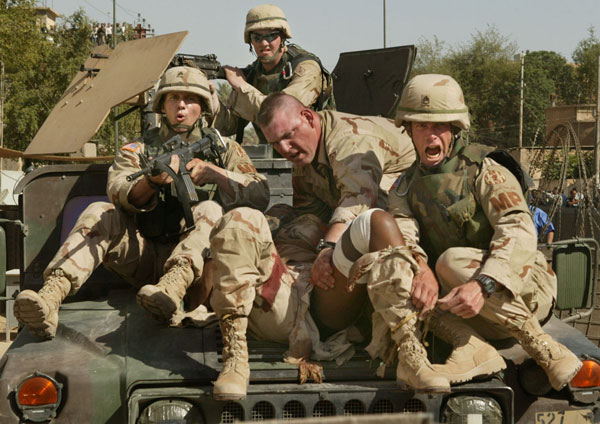 |
 | ||||||||||
Killing 2004
January 2005
|
 |
|||||||||
|
Late at night on the deserted Port-au-Prince streets, Lionel, the fat taxi driver, reminisces about the early months of 2004: "I was the head driver for one of the networks. I would get up early, 5 a.m., go out and find the good fresh bodies, the real fresh ones, still bleeding. Bring the crew back to film them; they were very happy." Switching subjects, he leers at me, "You ever been with a Haitian woman?" He nods at the girl seated next to him, who looks to be 18. "This one here's good. She's my girlfriend, but if someone wants to do something nice for her, I don't stand in the way." Times are tough for Lionel. The killings have dropped to a routine two or three a day and the press has moved on to other stories. Last February, when Aristide fell, the foreign press corps numbered a hundred or so. Ten months later, it is down to a handful of freelancers and an occasional staffer passing through town. Meanwhile, the rebels control the entire Central Plateau and at least eight towns. The chimeres, Aristide's supporters in the slums, are making forays each day into the downtown area, turning Bel Air and La Saline into low-intensity battlegrounds. The hope last year--that Haiti had turned the corner--is gone. Many believe the country is in the first days of a civil war.
I made six trips here this year and became intimate with Gonaives, Cap Haitian and the capital. I learned enough French and Creole to do basic communication, made acquaintances on both sides of the fighting, found sources in the government and among the U.N. staffers. Each country has its layers, you stay awhile and begin to peel them back and peer beneath.
I did another stint in Baghdad this year, random street work and a tour with the troops in Sadr City, a month that passed like dog years. We got hit every time we left the gate: RPGs, roadside bombs and artillery. It got to the point where you wished for someone to shoot at you with just an AK. Then we got back to the base and got mortared some more. Guys were wounded going to mess hall, sitting in the shitters. I learned to write on deadline as well as photograph, an achievement I'm happy with. I want to have learned something profound, something to keep me and other journalists safe. It did not happen. A roadside bomb exploded a moment late, missing my Humvee; mortar rounds fell in front of, and behind, me as we covered fighting at a Baghdad police station. There is nothing heroic about it; the nature of war is chaos and chance. You stay alive because you are lucky, little more.
2004 was a bloody year. Was it worse than the years of Iran/Iraq, Ethiopia/Eritrea, the Balkans? Or is it just that, this time, America is deeply enmeshed in the bloodshed? For Christmas dinner, my brother seasoned a hunk of lamb the size of a football. It was shiny, viscous, bloody. I'd seen it before, a body part somewhere, and I run through the bombings and killing, trying to place it. People ask me--real concern in their eyes--how I'm doing. It's hard to explain that really I'm doing fine. I have the best job in the world, one that matters, one that challenges and changes in some small way. I witness history. I'm OK. It's the people back home--going about their lives as the world burns--that I worry about.
© Michael Kamber
Dispatches are brought to you by Canon. Send Canon a message of thanks. |
||||||||||
Back to January 2005 Dispatches
|
|



